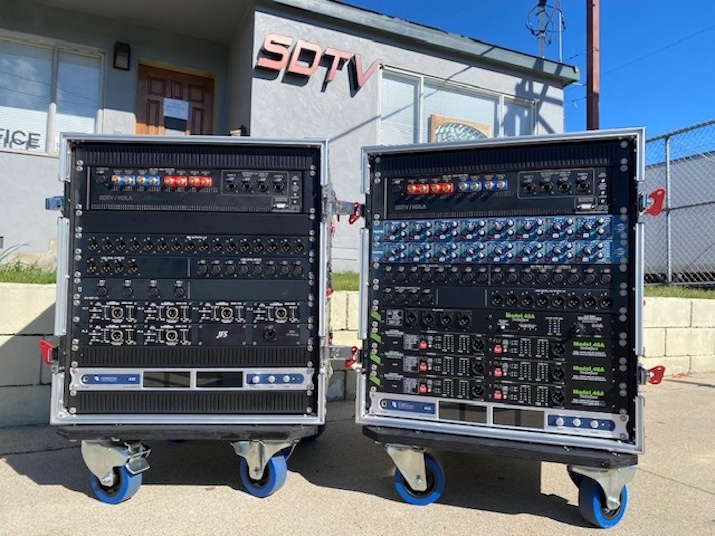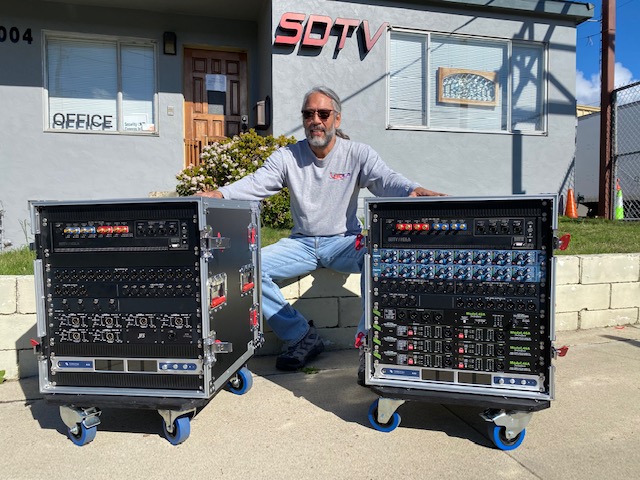SDTV, Joseph Electronics Develop Fiber Transport System for Lightweight Infrastructure
The goal is simplified transmission/reception of multiple feeds
Story Highlights
The COVID-19 pandemic has changed the way sports-production crews and mobile-services providers do their job, and, this year, companies are creating techniques and methods to make that job a lot smoother. After a year of development, SDTV (Satellite Digital Teleproductions) is deploying its Fiber Transport System, which simplifies the transmission and reception of multiple onsite feeds.
“This hardware is working right off the bat with minimal troubleshooting,” says Mark Parikka, operations manager, SDTV. “We’ve been working on this for a very long time, and I’m really looking forward to showing this off.”
Planning Process: Concept Creation Over Zoom, Back-and-Forth Revision
As with any piece of equipment, the process of putting parts together, receiving feedback, going back to the drawing board again, and coming to a conclusion was arduous. Luckily, Joseph Electronics and SDTV have a longstanding, fruitful relationship that has resulted in other products deployed in the company’s fleet of production trucks. Initially, SDTV came up with the idea for the Fiber Transport System in March 2020 — just before the onset of the pandemic. More than a year later, in August 2021, Parikka and his team gave Joseph Electronics the green light to build it. Because of the pandemic, the planning was done primarily over Zoom.
“We had a few drawings that were done early in the process,” says Larry Purdue, engineer-in-charge, SDTV, “but it wasn’t exactly what we wanted. When we finally decided on a certain system, we continued to toy with this idea.”
SDTV’s main point of contact was Joseph Electronics Director, Engineering, Carl Roszczybiuk. Through back-and-forth conversation with Roszczybiuk, Purdue gradually found the desired design.
The Fiber Transport System is essentially a customized flypack that takes multiple channels of video, audio, data, and intercom and muxes everything into two strands of fiber for sending and receiving. For the crew operating onsite, there is both a field unit and a truck-side unit performing the receiver/transceiver operations over fiber. To minimize the overall footprint, Purdue emphasized portability.
“They wouldn’t have been able to ship [the equipment] if it was going to include a battery, so we supplied an external battery backup system,” he explains. “This was the easiest solution rather than integrating [an internal battery] and making it heavier. We wanted this to be as small as it could be and reduce its overall weight.”
Real-World Use: National Lacrosse League Gets First Deployment
The hardware was assembled, packaged, and awaiting shipment, but, unfortunately, wide-spread shipping delays and supply-chain congestion delayed its debut. Originally, SDTV aimed to have the Fiber Transport System ready to roll for the high school football schedule in San Diego at the start of August. From an operational standpoint, the system would have been ideal for this setting since high school stadiums generally don’t have a well-established tech infrastructure. The six-week delay pushed expectations to the end of September and past the high school football schedule. The system finally reached SDTV’s offices right after New Year’s and is currently in use for the National Lacrosse League’s San Diego Seals at Pechanga Arena.
“There is no [permanent] wiring in the booth, so we started with the second Seals home game of the season on Jan. 8,” says Purdue. “We have two overhead POVs in the catwalk and shoot into the booth. We’re also controlling all the audio feeds that are coming from the booth as well.”
Long-Term Benefits: A Full Schedule of Deployments
Nearly a month into 2022, the Fiber Transport System is already paying dividends for SDTV. With more San Diego Seals games to go, participation at Super Bowl LVI in Los Angeles in mid February, the entire high school football campaign in the fall, and other events in between, this piece of equipment has a busy year ahead. Beyond 2022, the company is eyeing a prosperous future with this new workflow.
“This adds value to our company and makes some of these productions a lot easier to do,” says Parikka. “It was a long process, but Joseph Electronics were great at being responsive and keeping us informed.”


